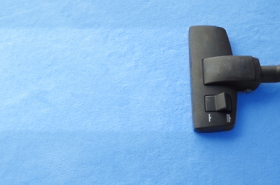Regular vacuuming is one of the most important things you can do to not only keep your carpets clean, but to prolong their life. But your vacuum must do its job well. Here is what you must know about keeping your vacuum performing optimally.
Always make certain that your vacuum cleaner is in great shape. The beauty and longevity of your interior textiles depends on it! The purpose of a vacuum is to suck up grit, dirt and other contaminants which would otherwise mar the beautiful appearance of your home or office, create poor health conditions, and cause your carpets, upholstery and other interior textiles to deteriorate more quickly. Grit and dirt left in carpets and furniture acts like sandpaper, eroding and eventually severing the fibers. You need a vacuum that efficiently removes these damaging particles.
This is not a matter of your vacuum’s brand—though that can play a part—it is more a matter of your vacuum’s condition. The better your vacuum is maintained, the longer your interior textiles will remain in good condition.
Here are some important tips for maintaining the health and efficiency of your vacuum:
Do not overfill or empty and reuse your vacuum bags
These bags are designed to trap contaminants without impeding airflow. The pores of an overly full or reused bag become clogged and no longer allow for air flow. This can reduce the cleaning efficiency of your vacuum by 50% or more. Emptying the bag when it is half full will help maintain your vacuum’s efficiency. Keeping plenty of spare bags on hand can help you avoid the temptation to leave the same bag in past its point of maximum usefulness.
Don’t be cheap!
Remember that “you get what you pay for.” Using poor quality “bargain” bags may ultimately cost you more in vacuum repair and carpet replacement than you ever actually save. Why? Because poor quality bags will impede your vacuum’s effectiveness and allow particles to escape the bag and get into the interior of your vacuum or back to the floor. This not only defeats the purpose of vacuuming in the first place, but can also damage the motor and parts of your vacuum, resulting in additional repair or replacement costs you might have avoided by using better quality bags.
Change your vacuum belt every three months
The vacuum belt is what turns your vacuum brush, loosening dirt and raising matted down fibers. As the belt becomes worn, it stretches, causing the brush to turn more slowly and with less force. This may not be immediately obvious because the vacuum may still pick up the most obvious surface litter, so replacing belts at regular intervals will help keep your vacuum at its best. It is a quick thing to change, but you may want a professional to do it for you, since the correct amount of tension in the new belt is vital—too tight and it can strain your vacuum’s motor and bearings, too loose and you will have the same problem as you have with a worn out belt.
Have your vacuum professionally serviced every ten to twelve months
No matter how efficient your vacuum is, not all of the grit and dirt your vacuum picks up makes it into the bag. Some of it will accumulate in the housings and bearings, eventually clogging things up. This can result in a short-circuited or overheated motor which will, at some point, burn out. This may also create a fire hazard.
Over time, your vacuum’s attachments will also wear out, becoming inefficient, eventually wearing to the point where they no longer do their job effectively. Obviously, this greatly impedes your vacuum’s ability to clean and will ultimately shorten the life of both the vacuum and your interior textiles.
Important Note: Be sure to refer to the manufacturer’s instructions regarding the type of vacuum attachment that should be used with your carpet or upholstery. Using the wrong attachment can actually result in damage to your interior textiles.
For more tips like this, refer to our Carpet and Interior Textiles Care Guide.

